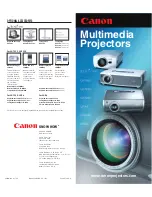
2
Installation
Positioning Your Surge Suppressor:
For desktop computers, place your monitor on the surge
suppressor (which is designed to support all standard monitors). For notebook computers, place
computer on the surge suppressor.
Connect Your Surge Suppressor to Your AC Power Line:
The Surge Suppressor's power cord
should only be connected to a standard 3-wire grounded 120V AC 60 Hz outlet.
Activate Your Surge Suppressor's Switches:
The "MASTER" switch simultaneously controls
power to all outlets (except the outlet labeled "UNSWITCHED" or "ALWAYS ON"). The other
switches control power to their individual corresponding outlets on the rear panel. The "MASTER"
switch must be ON for the individual switches to work. The outlet labeled "COMPUTER" does not
have an individual front panel switch; it is controlled by the "MASTER" switch. The switch
indicator lights will illuminate when their corresponding switches are ON.
The outlet labeled "UNSWITCHED" or "ALWAYS ON" is not controlled by any of the front panel
switches, even the "MASTER" switch. It provides power (as long as it is available at the wall outlet)
for equipment you always need ON, including fax machines or clocks. Outlets are labeled only for
your convenience. It is not necessary, for example, to connect a printer to an outlet labeled
PRINTER. Any type of equipment (as long as it does not exceed 15 amps) can be plugged into any
of the outlets. MT 6PLUS models include a static eliminator feature. Before working on your
computer, touch the shiny metal plate on the front of MT 6PLUS models.
Check Your Surge Suppressor's Diagnostic Indicator Lights:
The diagnostic LEDs will indicate
various operating conditions when the surge suppressor is plugged into a live 120V AC outlet and
the "MASTER" switch is ON.
"PROTECTED" or "SURGE PROTECTED" LED:
Indicates the surge suppression
components are intact and providing complete protection against spikes and surges. If this
LED does not illuminate, some of the surge suppression components are not functioning and
the unit should be replaced. Call Tripp Lite Customer Service at
(773) 869-1234.
"WIRING STATUS" LED or "LINE OK" LED:
Indicates 120V AC power is present
with no wiring faults detected.
"LOW VOLTAGE" LED (select models):
Indicates that incoming line voltage has fallen
below acceptable levels. Connected equipment may still function, however performance
may be impaired. The surge suppressor can indicate low voltage conditions (brownouts) but
cannot correct them. If you experience chronic low voltage conditions, consider purchasing
a line conditioner or UPS system (available in a variety of configurations from Tripp Lite).
"LINE FAULT" or "FAULT" (select models):
Indicates there is a wiring fault in your
wall outlet (reversed phases, missing ground, etc.). A loose wall outlet may cause this LED
to illuminate. Have a qualified electrician fix the fault immediately. This LED will identify
most common wiring faults (but not necessarily every possible type of fault).
Connect AC Equipment to Your Surge Suppressor:
Connect the AC power cords of your
equipment, including any 2-wire devices. Do not plug extension cords into it. DO NOT
OVERLOAD the Surge Suppressor. Each outlet can handle up to 15 amps, but do not exceed a total
load of more than 15 amps for all outlets. If the circuit breaker trips, the outlets will cease to provide
power. Remove overload and depress circuit breaker to reset.
Connect Your Surge Suppressor to Your Telephone Line:
Connect the phone cord from the wall
jack directly to the Surge Suppressor phone jack labeled "IN." Connect the phone cord (provided)
from the device to be protected directly to the phone jack labeled "OUT." The Surge Suppressor
must always be the first item connected in line from the telephone wall jack. The Surge Suppressor
must be plugged into a 3-wire grounded outlet to work.
200703094--Protect It undermonitor OM version 2.qxd 4/6/2007 10:27 AM Page 2


























